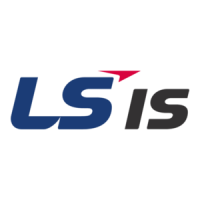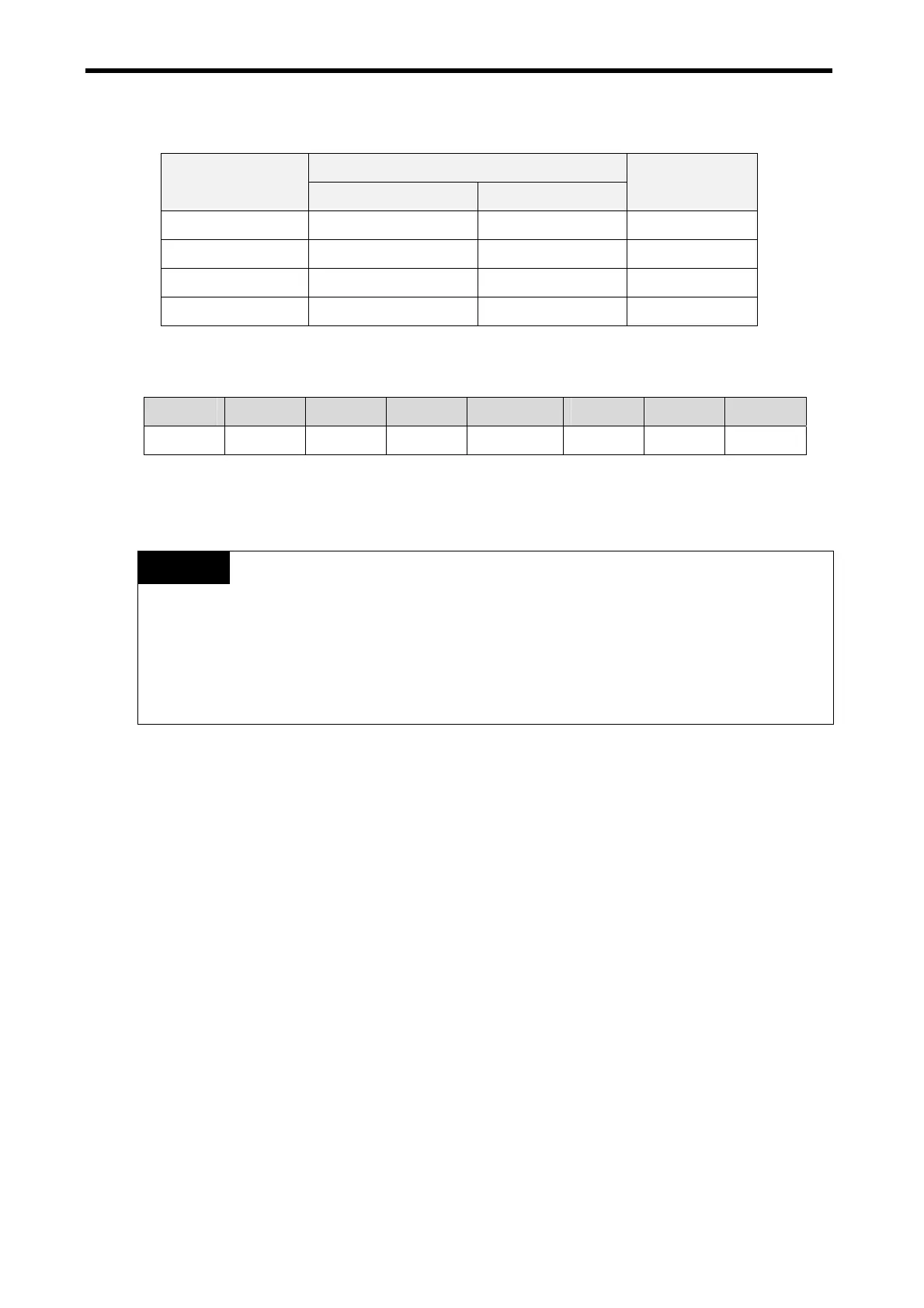Chapter 4 CPU Function
4 - 24
(2) Read RTC data from special register
The followings are the memory address of preset data.
Description
Special register
Area (Word)
Upper byte Lower byte
Data
(BCD format)
F053 Lower 2 digits of year Month H0207
F054 Day Hour H2313
F055 Minute Second H5020
F056 Higher 2 digits of year Date H2002
Example : 2002. 07. 23. 13:50:20, Tuesday
(3) Date expression
Number 0 1 2 3 4 5 6
Date Sunday Monday Tuesday Wednesday Thursday Friday Saturday
2) Time Error
±5 second / 1 month
1) If RTC stops or error occurs, write new data to the RTC then error is called off.
2) There is no written clock data in the RTC when shipped.
3) Before using RTC module, write clock data to the RTC first.
4) If the range of time is exceeded, RTC is not operated. Ex)14 month 32 day 25 hour
Remark

